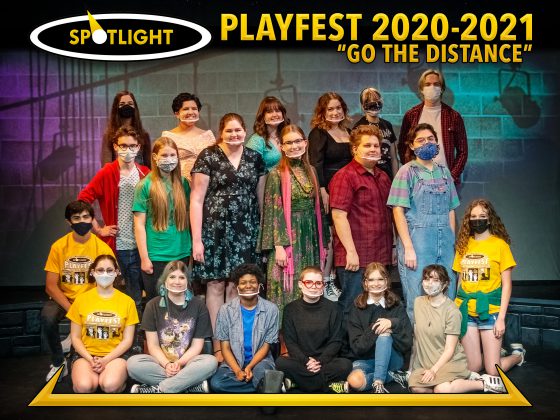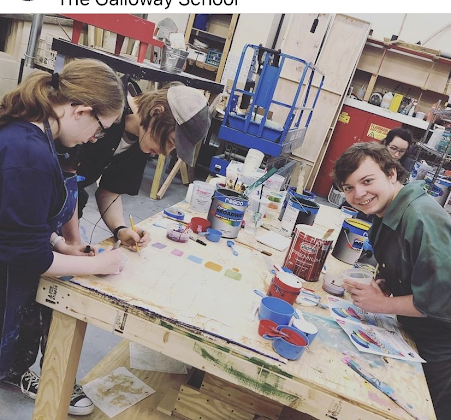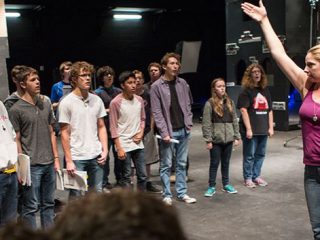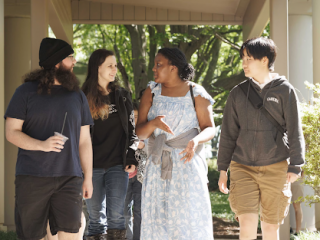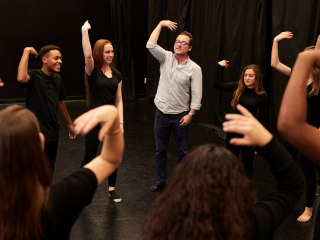We tend to think of theatre as something that happens in confined spaces, like…well, a theatre. But theatre, and the benefits that come with it, can happen anywhere. From traditional spaces to cafeterias to hospital rooms, theatre is increasingly becoming recognized as a valuable tool for communities beyond the walls of a theatre or a drama classroom.

One of my favorite experiences in college was taking theatre out into the community as a resource to help serve specific populations. I was part of a group that worked with an afterschool program serving children on the autism spectrum. We were tasked with using theatre to help students with communication and social skills like eye contact, emotional awareness, and empathy. Through theatre games and basic role-playing, kids had the opportunity to grow as individuals but also to socialize with peers and form valuable bonds in a nurturing and affirmative environment. Near the end of the semester, one mother commented that her son’s eye contact had noticeably improved. I recently had the chance to reconnect with her and her so – he’s a high school freshman now and every year he hosts a fundraiser for the program. Another group went to a children’s hospital, performing short plays and using theatre games to help boost morale and give patients an opportunity to experience play and escape into another world for a while.
When I started teaching, I knew I wanted to incorporate some community-based work into my curriculum. I had no idea where or how to start, so I just sort of—started. I reached out to nearby assisted living centers, the local library, daycares…pretty much any place that I thought might have some use for a fledgling drama teacher and his band of teenage thespians. As someone who isn’t a natural “salesman”, it was intimidating. But by and large, people want to be of service where they can. I did get some equivalents of “don’t call us we’ll call you”, but I didn’t get any outright “no’s”.
My first real success came courtesy of Facebook. I kept my eyes on some community groups and happened to see a post for a nearby retirement center that was looking for entertainment. I sent an email and got an enthusiastic reply, so we set someone up and then my students and I started planning. My students were big fans of improv, so we decided that an improv show would be the way to go. They were surprised to learn that you can actually rehearse an improv show. We mapped out and practiced the games we would do, did some ensemble work, and established the “rules” for our show (the first of which was, imagine that your grandparents are in the audience and adjust your content accordingly). I found that one of the keys to success was to give the students as much agency over the process as possible. I guided them towards the questions they should be asking about the shape of their show, but let them discuss and come to a consensus. By positioning myself as a coach and a guide more than a director, the students took ownership and that ultimately improved buy-in and the quality of the product.
If community-based work is something you’re thinking about incorporating into your curriculum, here are some quick tips based on my experience.
Start Small
I perpetually have a “conquer the world” mentality, and I first looked at community outreach the same way. But I realized that most of my students had never done anything quite like this before (for that matter, I had never led anything like this). So starting small and building from there would give us an opportunity to really dig into individual facets of the project. We started with that first performance at an assisted living center with about seven students. A smaller project with fewer moving parts was lower-pressure, there were fewer schedules to try to work around, and everyone had an opportunity to really take ownership without the project collapsing under its own weight.
Don’t forget your own backyard
It didn’t even dawn on me until later that we had two elementary schools in our district that we could bring some theatre to. This coming year, I’m planning to incorporate some fairy tale skits into a unit about character, which we’ll go and perform for the elementary kids. Not only has forming a partnership with other schools given both my students and the elementary school students fun opportunities, it’s also helping raise the profile of our drama program and shows our administrators just how much work goes into what we do. So don’t forget to harness the connections and resources you already have. And don’t be shy about asking (née begging) for things you might need! I sent a district-wide email asking for props, and several people brought in random items that they didn’t have a use for.
Make It Personal
As teachers, time is a precious commodity. We’re experts at finding shortcuts and doing things in the most time-efficient way possible. In that spirit, when I started cold-contacting people via email, I sent out a single email to five or ten people. I would get sporadic responses, so I decided to alter my approach and started sending individual, personalized emails. It took longer, but my response rate noticeably went up. Anyone who’s ever gotten an email that’s sent to a group of people knows the routine-it’s easy to ignore them. But it’s a lot harder to ignore an email addressed solely to you.
On a related note, don’t forget to focus your pitch on the benefits you offer your recipient. I always mention that my students will benefit from being able to go out into the community, but my main focus is on how having us come in will benefit the specific organization and the people it serves.
Be Methodical
Along the same lines, I started getting more meticulous about when I contacted people. It was really easy to blast out some emails on a Friday night or over the weekend when I had some extra time. But I realized that those emails were probably getting buried among the dozens of others that my recipients had to wade through on Monday. Now, I’ll write up a draft email over the weekend and wait to send it until a time when it’s more likely to get to the top of the person’s inbox, and when they’re less inundated. When I reach out to principals in my district, for example, I’ll usually send the email on Wednesday or Thursday afternoon, when things tend to be a little less busy.
Do Your Homework!
If you’re not familiar with an organization or institution, do some research and find out what they’re all about. What specific population(s) do they serve? What’s their mission? That will help you hone in on places that will be a good fit for a partnership, and you can tailor your initial message to them. Even more importantly, you can build the work that the students put together around the organization’s needs. After all, the kind of performance we’d bring to a preschool is probably going to be different than what we’d bring to a retirement center, which will probably be different than what we’d do at a counseling center. It’s a lot like going into a job interview and being asked “why do you want to work here?” Think specifically about what needs an organization has and how you can help meet them. This applies even to places where you think their needs are obvious. Public libraries, for example, usually serve or are primarily frequented by very different populations based on where they’re located within a community.
Be Bold
One thing I know about myself is that I’d make a terrible salesman – I can turn on the charm, but I don’t have that persuasive “don’t take no for an answer” energy. So when I started cold contacting people, it was intimidating. I somehow felt like I was bothering people or imposing myself on them. But I changed my mindset. After all, I’m not forcing anyone to say ‘yes’–if they really aren’t interested, it isn’t hard to send a polite “no thanks”, or just ignore my email. So be bold! Reach out to those places that you think will never in a million years be able to make anything work. After all, you never know what can come from a simple introduction.
This school year, my goal is to go out into our community at least twice. Like some sort of off-brand Ms. Frizzle, I’m loading up the school bus and taking my merry band of drama kids anywhere that will have us. I’m in touch with professors from a nearby college with an outstanding drama program, and we’re already working on forging a partnership that will allow my students to work and learn alongside college drama students and professors. Here’s a video about a high school that created a similar partnership:
If you’ve tried community-based work, I’d love to hear about your experience!



